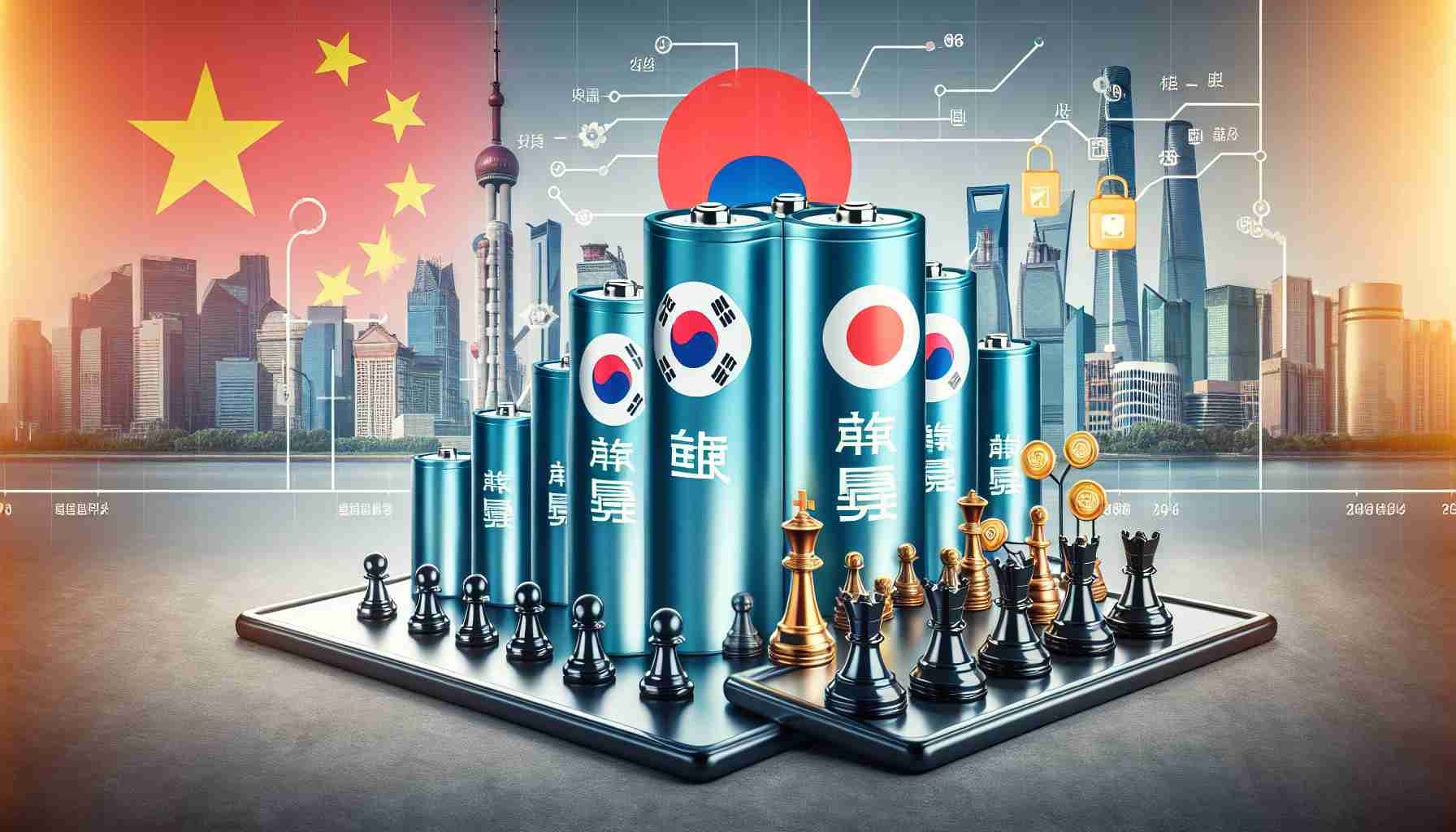- Korean battery manufacturers face challenges due to U.S.-China trade tensions and slowing EV demand.
- Chinese facilities, despite geopolitical hurdles, remain vital for operations and supply chains.
- Significant layoffs are occurring, attributed to low utilization rates at Korean factories in China.
- Over 95% of Korea’s graphite imports come from China, highlighting dependency on the Chinese market.
- Global automakers are shifting focus to emerging markets, offering new opportunities for Korean manufacturers.
- Amid these complexities, China continues to play a crucial role in the strategic growth of Korean battery firms.
As trade tensions intensify between the U.S. and China, Korean battery manufacturers like Samsung SDI and LG Energy Solution face a tumultuous landscape. Slowing electric vehicle (EV) demand weighs heavily on operations, yet the allure of China’s extensive supply chain remains undeniable.
Amid whispers of output cuts and layoffs, industry insiders reveal the paradox: despite the challenges, the Chinese facilities are non-negotiable. The Xi’an plant, a hub for energy storage systems and EV batteries, stands as a prime example. Originally slated for expansion to support Hyundai’s new vehicle, its future hangs in the balance, illustrating the precarious situation these manufacturers face.
LG Energy Solution operates three plants in Nanjing, generating essential components for EVs. Yet, the utilization rates have plummeted, leading to widespread layoffs that the company frames as routine restructuring. The reliance on Chinese graphite—over 95% of Korea’s imports—has become painfully evident, especially with U.S. EV subsidies now out of reach due to sourcing issues.
Despite these hurdles, experts point to golden opportunities in emerging markets. As global automakers pivot their focus from saturated North American and European markets to high-growth regions like India and Southeast Asia, Korean battery manufacturers can leverage China’s low-cost labor.
Ultimately, while navigating geopolitics presents challenges, the strategic significance of China positions these companies to thrive in new marketplaces. The takeaway? China is not just a supply chain; it’s a lifeline for these industry giants in their quest for global expansion.
Shifting Sands: How Korean Battery Manufacturers Are Navigating Geopolitical Challenges
As the landscape of electric vehicle (EV) battery manufacturing continues to evolve, Korean companies like Samsung SDI and LG Energy Solution are facing a complex web of challenges and opportunities. With trade tensions between the U.S. and China escalating and EV demand hitting a plateau, these manufacturers must adapt to stay competitive while leveraging the advantages of China’s manufacturing prowess.
Market Insights and Trends
1. Market Forecasts: Analysts predict that the global demand for EV batteries will rebound by 2025, with an expected compound annual growth rate (CAGR) of over 20%. Emerging markets in India and Southeast Asia are anticipated to be the focal points of growth, attracting investment from Korean manufacturers aiming to establish a stronger foothold.
2. Use Cases and Innovations: Korean companies are increasingly exploring innovations in battery technology, including solid-state batteries, which promise higher energy density and faster charging times. This innovation race is crucial for maintaining competitive advantages against Chinese manufacturers who have significantly invested in R&D.
3. Sustainability: As battery production becomes a significant contributor to environmental impact, Korean manufacturers are also focusing on sustainability. Initiatives to recycle battery components and reduce carbon footprints are in the works, as consumers and regulators demand greener practices.
Key Questions and Answers
1. What challenges are Korean battery manufacturers facing due to U.S.-China trade tensions?
– The ongoing trade tensions complicate manufacturing operations for Korean companies, leading to increased costs and supply chain disruptions. Notably, the restrictions on Chinese imports have limited the availability of critical materials, directly impacting production capabilities.
2. How are these companies adapting to slowing EV demand?
– Manufacturers are restructuring their operations, including output cuts and workforce reductions, to align with current market realities. Moreover, they are pivoting towards emerging markets to capture new growth opportunities and diversify their customer base.
3. What role does China play in the operations of Korean battery manufacturers?
– China is not only a vital supply chain hub for essential materials like graphite but also a key manufacturing center due to its cost advantages. This reliance is a double-edged sword, as geopolitical tensions increase the risk of operational challenges, yet the allure of China’s extensive supply network remains significant.
Limitations and Security Aspects
The heavy dependence on Chinese supply chains poses a significant risk to the security and stability of operations. Companies are actively seeking to mitigate these risks by diversifying their supplier base and exploring local sourcing options.
Pricing Dynamics
Battery prices have shown volatility due to fluctuations in material costs. As lithium and cobalt prices rise, manufacturers face pressure to keep pricing competitive while simultaneously improving profit margins.
Conclusions
In conclusion, while the road ahead for Korean battery manufacturers is fraught with complexities due to geopolitical tensions and market fluctuations, the potential for growth in emerging markets and technological innovations offers a silver lining. The critical insight remains: China is not just a supply chain; it’s a lifeline for these industry giants.
For more insights on this topic, visit Battery Industry.
